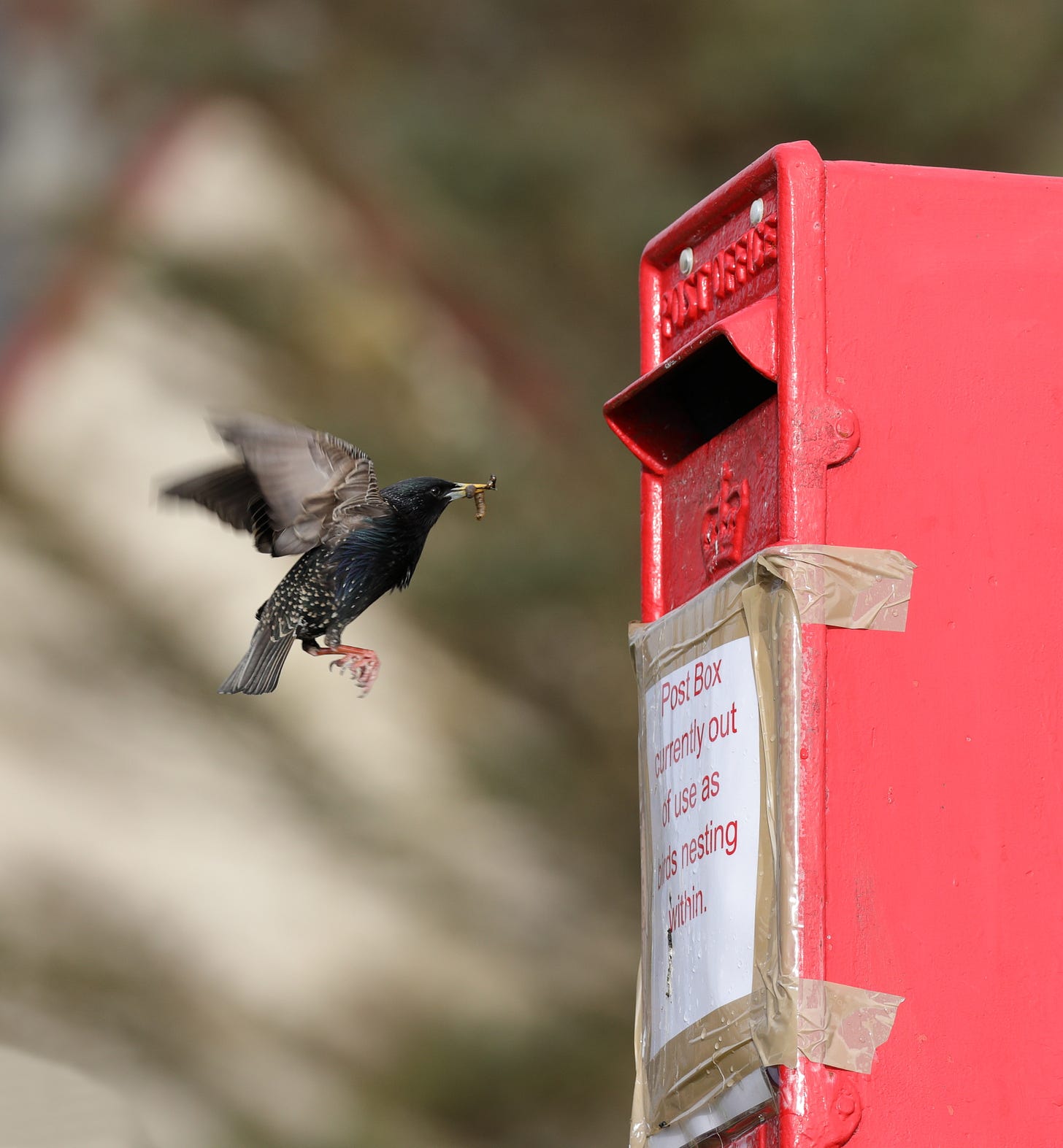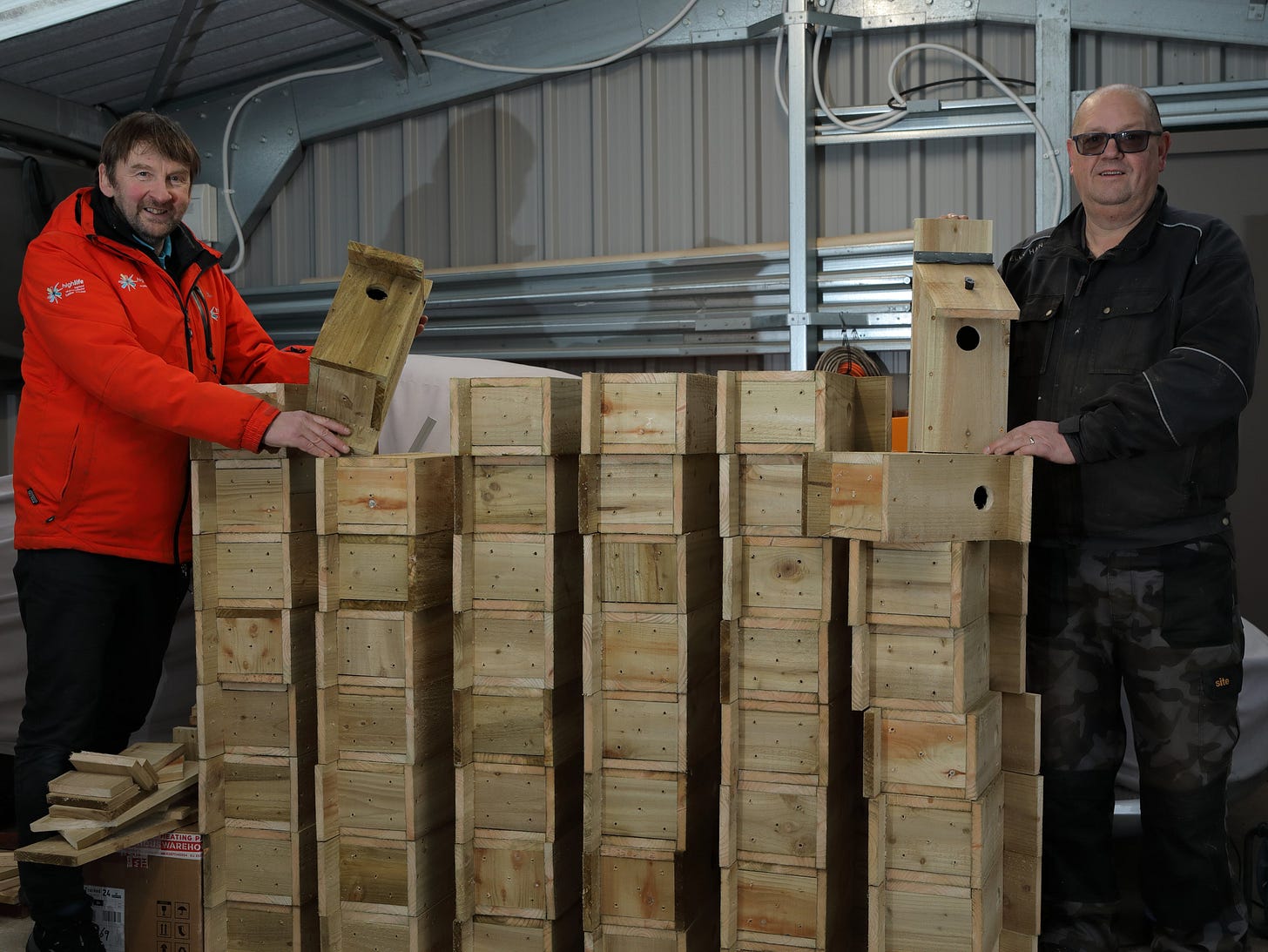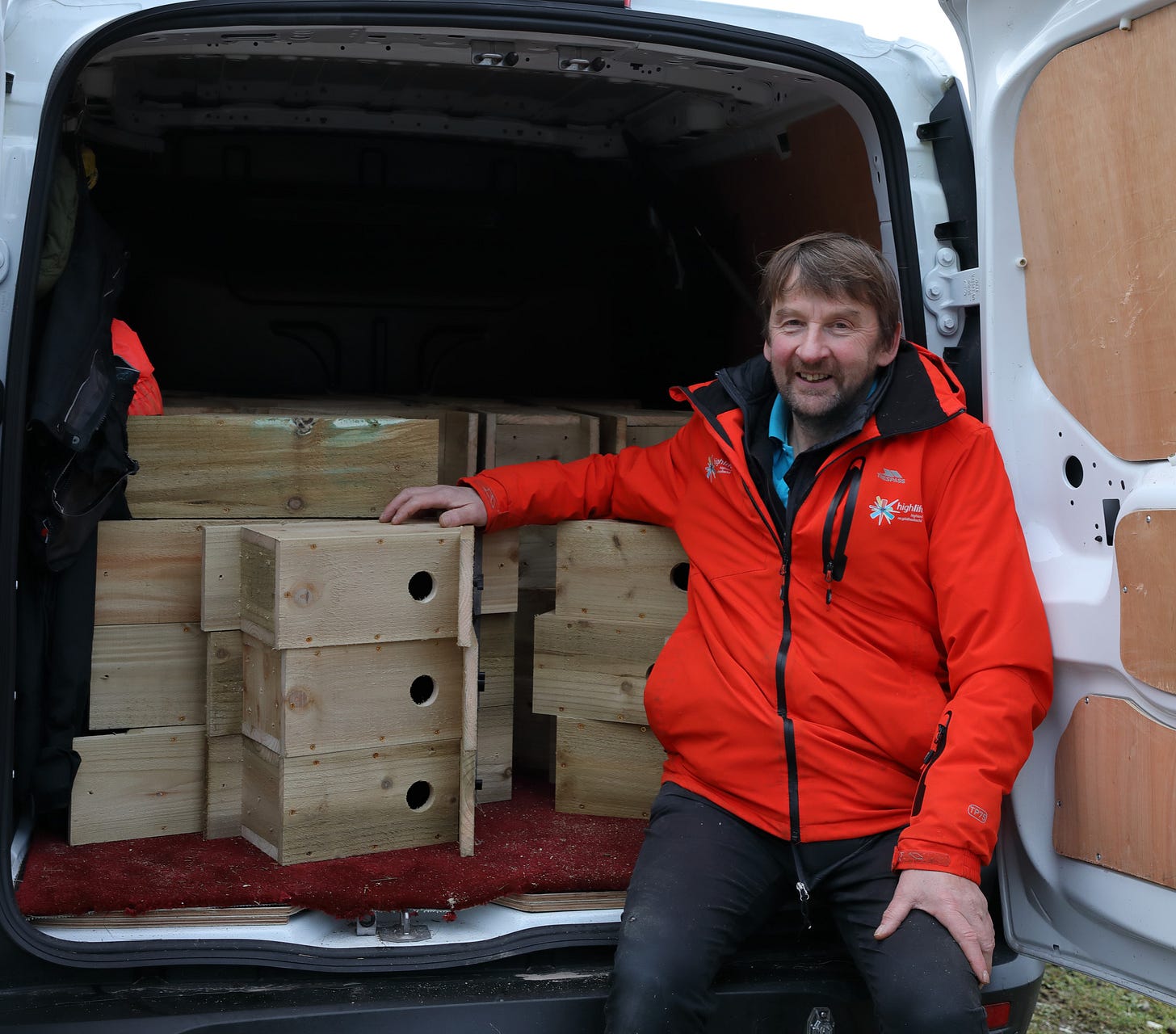The Plight of the Starling: Part 2
Andy explains how we are planning to take action for starlings in Highland and how you can help
As we saw in Part 1, the decline of starlings in Scotland is a story unfolding in real time. Once a common sight in our gardens, parks, and town centres, these dazzling birds are slipping away at an alarming rate. Their numbers have fallen by nearly half in less than 30 years, and they are now on the Red List of birds of high conservation concern.
But here’s the thing - we can still help.
As a ranger service, we’re committed to giving starlings the best chance of survival. From working with schools to encouraging people to make their gardens more wildlife-friendly, we’re rallying support for these charismatic birds. And the good news? Anyone can get involved.
One of the biggest challenges starlings face is finding places to nest. They favour cavity spaces—nooks in old trees, holes in buildings, or even the eaves of houses. But as towns and countryside change, these nesting spots are disappearing.
That’s why we’re focusing on providing more homes for starlings.
A Highlands-Wide Citizen Science Project
This year, we’re launching a Highlands-wide project to get as many nestboxes up as possible - starting with schools. Across the region, we’re encouraging primary schools to put up starling nestboxes and monitor what happens next. Will the starlings move in? How many eggs will they lay? How many chicks will survive?
The information they gather will help conservationists understand what’s happening to our starlings, and crucially, why so many aren’t making it.
By collecting this data in a scientific and ethical way, we hope to contribute valuable information to help conservationists understand what’s happening with our starlings.
All data will follow the British Trust for Ornithology (BTO) nest monitoring guidelines to ensure minimal disturbance. You can read the BTO Nest Monitoring Code of Conduct here:
In conservation, hard data matters. And when it comes to starlings, we don’t have enough of it.

That’s where people power comes in.
Through our project, schools and individuals can become part of a growing effort to track how well starlings are breeding. The more we know, the better chance we have of reversing their decline. Every nestbox placed, every clutch of eggs recorded, every fledgling counted adds to the bigger picture.
And if you’re not in a school? You can still take part. By putting up a starling nestbox in your own garden or community space, you can help provide much-needed nesting sites.
Building Nestboxes – A Simple but Powerful Step
We’re encouraging as many people as possible to put up starling nestboxes in their gardens, parks, and green spaces. You can find a simple nestbox design here: ➡️ RSPB Starling Nestbox Guide
Nestbox Design – How to Build One
Want to build your own starling box? Here’s what you need:
Rough-cut timber (150 x 20mm thick)
Entrance hole size: Minimum 45mm diameter (can be square)
Best if the cut between the roof and front is sloping
Position your box at least 3 metres above the ground in a safe, sheltered spot. And remember—never handle the eggs or chicks. It’s illegal without a special licence.
Thanks to the generosity of those who support The High Life Highland Ranger Service - through donations and paid subscriptions to Nature Unveiled - we’ve been able to take direct action for starlings. With the funds raised, the Ranger Service has built over 70 new starling nestboxes, specially designed to provide safe, suitable nesting sites for these declining birds. These boxes are now being placed in key locations across the Highlands, including schools, community green spaces, and areas where natural nesting spots have been lost. This project wouldn’t be possible without the backing of our supporters, whose contributions are making a real difference in helping to secure a future for starlings in Scotland.
🌟 Will you join us in saving the starling?
If you decide to put up a box, we’d love to hear about it! Let us know where you’re placing it and whether starlings begin to use it - the link to where to report your data is at the end of this article.
Or you might prefer to help this campaign through a donation. Upgrading to a paid subscription at £3.50 per month, helps our service through trickle income, or give a one off donations. Links below:
The Bigger Picture
Of course, starlings need more than just a place to raise their young. They are experiencing the loss of insect-rich habitats.
A starling’s diet is diverse, but their young rely on a high-protein diet of invertebrates - beetles and caterpillars. With modern farming methods and urbanisation reducing these food sources, starlings are struggling to find what they need to survive.
That’s why small changes can make a huge difference:
🌿 Let your lawn grow longer – it encourages insect life
🐛 Avoid pesticides – these kill the invertebrates starlings rely on
🌱 Plant native wildflowers – they attract pollinators and bugs
🌾 Provide mealworms or suet – great food sources for starlings
Every patch of wild-friendly space helps. And when thousands of people make small changes, big things happen.
Why Starlings Deserve Our Support
People don’t always warm to starlings. They’re often dismissed as noisy, boisterous, even a bit of a nuisance when they descend on bird feeders in flocks. But watch them properly, and you’ll see a different story.
These birds really are remarkable.
Up close, their feathers are a dazzling shimmer of greens and purples, changing with the light. Their song is an extraordinary mix of mimicry and melody, imitating everything from curlews to car alarms. And their murmurations? Nature’s ballet, choreographed in the winter sky.
Their decline should concern us all. When a bird as common as the starling starts to disappear, it’s a sign that something is wrong with our natural world.

A Call to Action – Will You Help?
The future of starlings isn’t set in stone. There’s still time to change their story, but only if we act now.
Whether it’s putting up a nestbox, supporting our schools’ project, giving a donation or making your garden a little wilder, every action counts.
This is a bird worth saving. Let’s make sure that, in the years to come, future generations can still look up and see starlings dancing across the sky.
Submit your data:
If you are an individual or a school taking part, please submit your data online via the BTO’s Nesting Neighbours project:
Let us know if you’re getting involved—we’d love to hear from you!
Andy Summers, North Highland's Senior Ranger for High Life Highland, is a dedicated naturalist with a deep understanding of the region's diverse ecosystems. His extensive experience in wildlife conservation and passion for preserving North Highland's pristine landscapes make him a vital asset. Andy's work encompasses wildlife observation, environmental education, and passing on a greater appreciation for the area's unique flora and fauna. His commitment to conserving North Highland's natural heritage is evident in his expertise and unwavering dedication.










Great work on the nest boxes
Brilliant idea - we’re already in! GROW project at Inverness Botanic Gardens put some Starling boxes up a few months ago and hopefully birds will start using them this spring 🤞